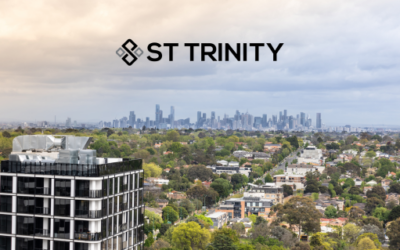Did you know? More than 40% of women in Australia have no investments at all, including property, compared to only 27.8% of men. This report, released by CoreLogic Australia in February 2025, highlights that many Australian women have great opportunities to start investing in property and build wealth in Australia.

Yes, women are missing out on opportunities in property investment in Australia that accounts for approximately 56% of Australia’s total wealth. Imagine the financial freedom and security that comes with owning property. It’s not just for the wealthy, it’s for every woman ready to take control of her future.
By stepping into the Australian property market, women can close the wealth gap, secure their financial independence, and create ever-lasting stability for themselves and their beloved families.

Compared to males, women face several financial obstacles, especially when it comes to investing and property. Women’s financial stability and homeownership aspirations are nevertheless hampered by systemic problems like income inequality, investment inequalities, and affordability constraints. Even among high-income workers, women contribute to the investment divide by displaying weaker financial confidence and more risk aversion.
In order to empower women and guarantee long-term financial security, addressing these obstacles calls for specific regulations, financial education, and alternative investment alternatives.

Table of Contents
Why Women in Property Investment Need to Take Action for Financial Security
So why does it matter? Property ownership isn’t just about having a place to live, it’s a critical tool for financial security, wealth accumulation, and retirement planning.
1. Property Ownership as a Key to Financial Security
- Over the past two decades, property values have grown by 193.1%, far outpacing wage growth (81.7%).
- This means homeowners have been able to build wealth significantly faster than those relying on income and savings alone.
2. Protection Against Housing Costs in Retirement
- Homeownership plays a critical role in financial stability during retirement.
- Two-thirds of renting retirees live in poverty, with three in four single female retirees facing financial hardship.
- Owning a home eliminates rent-related financial stress, making retirement more secure.

3. Higher Wellbeing and Stability for Homeowners
- The NAB Australian Wellbeing Survey found a strong correlation between homeownership and overall wellbeing.
- Homeowners reported a higher standard of living and mental wellbeing compared to renters.
- Even financially stressed homeowners reported better security than renters, highlighting the emotional and psychological benefits of owning property.
4. Rising Housing Costs Make Ownership More Crucial Than Ever
- Housing affordability is at its worst levels on record, with rising deposits and interest rates limiting access to homeownership.
- The ‘Bank of Mum and Dad’ is playing an increasing role in helping first home buyers enter the market, highlighting the growing difficulty of purchasing property independently.
- As property prices continue to rise, delayed homeownership can lead to long-term financial setbacks.
Property ownership in Australia is more than just a financial investment, it is a foundation for wealth-building, financial security, and wellbeing. Given the rising cost of housing, securing property early is essential for future stability, especially for women who face greater financial hurdles in homeownership. Addressing affordability and financial literacy gaps can help create a more equitable property market.

The State of Women’s Property Ownership in Australia 2025
“While overall dwelling ownership is similar between genders (64.4% of men and 62.7% of women), a smaller percentage of women (11.4%) own residential investment properties compared to men (14.2%).”
CoreLogic Australia
Overall there is a strong parity in property ownership between men and women whether as a home or investment. This gap is particularly evident among Gen Z, with significantly more young men owning investment properties.
Another concept is getting traction in Australia, namely Rent-Vesting. It is the strategy of renting a primary residence while owning an investment property. The report suggested that both genders are equally open to the idea of investing in a property while continuing to rent.
Source: Corelogic
In terms of property ownership, the survey findings suggest that women own the majority of the houses by 76% and men own the majority of Townhouses and apartments.
The Gender Investment Gap: Beyond the Family Home
There are many indicators that suggest the pay gap between males and females. Based on the employment to population ratio, 68.5% of males had jobs as compared to 60.5% of females. Females worked on an average only 31.9 hours as compared to 38.4 hours for males.
Source: Australian Bureau of Statistics
Read more: Why House and Land Packages Are the Ultimate Investment For Success In 2025
Over the years, the gap between males and females with respect to average weekly earnings has widened. The report by ANZ reveals a persistent gap in financial wellbeing between women and men, with women generally experiencing lower scores due to various socio-economic factors.
These factors include employment status, household living arrangements, caring for dependents, and mental health, all of which can significantly impact a woman’s ability to earn, save, and build financial resilience.
Beyond property, substantial differences exist in other asset classes. Men lead in superannuation ownership and boast considerably higher average balances. The survey also uncovered a notable divide in share ownership and cryptocurrency investment, with men participating at much higher rates. Even in co-ownership of investment properties, men tend to co-own more frequently than women.
These findings emphasize the need for greater financial literacy and targeted initiatives to encourage women’s participation and success in diverse investment avenues.
Despite these gaps, the Corelogic’s survey findings also found that more women rate home ownership as extremely important compared to men. However, a larger proportion of women also cite affordability as a significant barrier to entry.
Navigating the right pathway to secure your financial future
It’s never too late to start. For first time home buyers there are several advantages you can avail. These initiatives offer a range of financial support, including direct lending, concessional loans, and mortgage relief, often allowing households to benefit from multiple forms of assistance.
The First Home Owner Grant Scheme provides a one-time grant to eligible first-time homebuyers, funded and administered by state and territory governments. Additionally, the Indigenous Home Ownership Program focuses on facilitating homeownership for First Nations people by providing access to affordable home loan finance and support networks.
The First Home Super Saver Scheme enables first-time buyers to save for a deposit through their superannuation, offering tax benefits and allowing contributions up to $50,000.
The Home Guarantee Scheme (HGS) offers various guarantees, including the First Home Guarantee, Family Home Guarantee, and Regional First Home Buyer Guarantee, allowing eligible buyers to purchase homes with low deposits. Finally, the proposed Help to Buy program, managed by Housing Australia, will implement a shared equity scheme to help low to middle-income earners enter the housing market, pending legislative approval.
However, these schemes can be leveraged, a more structured approach in investing is required. And a paradigm shift in the perception towards property investment as a powerful investing tool rather than just a home.
How St Trinity Can Help You Leverage Your Investment Journey
We understand the data can be daunting sometimes, but there are tons of opportunities that exist. There is a need for a smarter, more strategic approach to property investment. With St Trinity’s expert guidance, access to the right properties, and investment strategies tailored to individual goals, women can overcome these barriers and build long-term wealth.
Frequently Asked Questions (FAQs) on Women in Property

1. Why is property investment important for women in Australia?
Property investment helps women build long-term wealth, secure financial independence, and protect against rising living costs. It also provides stability, especially during retirement.
2. What financial challenges do women face in property investment?
Women often experience income inequality, lower financial confidence, and affordability constraints. These factors make it harder to save for a deposit and access home loans.
3. How does the gender pay gap impact women’s ability to invest in property?
Women earn approximately $500 less per week than men, making it harder to save for deposits and qualify for loans. This affects long-term wealth-building opportunities.
4. What percentage of women in Australia own investment properties?
Only 11.4% of women own investment properties, compared to 14.2% of men. This gap highlights the need for greater financial education and support for female investors.
5. What is rent-vesting, and why is it a good strategy for women?
Rent-vesting allows individuals to rent a home in their preferred area while owning an investment property elsewhere. It provides financial flexibility and long-term wealth-building benefits.
6. How does homeownership impact women’s financial security in retirement?
Homeownership reduces housing costs in retirement, lowering financial stress. Renting retirees, particularly single women, face higher poverty rates due to ongoing rental expenses.
7. What government schemes can help women buy property in Australia?
Programs like the First Home Owner Grant, First Home Super Saver Scheme, and Home Guarantee Scheme provide financial support, including lower deposits and tax benefits.
I8. s it better for women to invest in property alone or co-own with a partner?
Women can invest alone or co-own, but independent ownership ensures financial control. Co-ownership may provide easier loan approvals but requires clear agreements.
9. How can women improve their financial confidence in property investment?
Education, financial planning, and working with property investment experts help women make informed decisions. Joining investment groups can also boost confidence.
10. What are the best property types for women investing in real estate?
Houses offer long-term capital growth, while apartments provide affordable entry points. Townhouses balance affordability and potential growth, making them a good option.
11. What are the key factors women should consider before buying property?
Location, growth potential, rental demand, and affordability are essential. Women should also assess their long-term financial goals and risk tolerance.
12. How can women start investing in property with a limited budget?
Low-deposit schemes, joint investments, and regional property purchases offer affordable entry points. Rent-vesting is another strategy to start building wealth.
13. Are women more risk-averse in property investment than men?
Studies show women tend to be more cautious investors, which can limit opportunities. However, strategic planning and expert advice can help mitigate risks.
14. How can St Trinity help women with property investment?
St Trinity’s property investment experts provide expert proper guidance, market insights, and tailored investment strategies. We help any aspiring woman investor to find the right properties and maximise their investment returns.
15. What is the long-term benefit of women investing in property?
Property investment builds wealth, secures financial independence, and protects against rising living costs. It also ensures stability in retirement and beyond.




